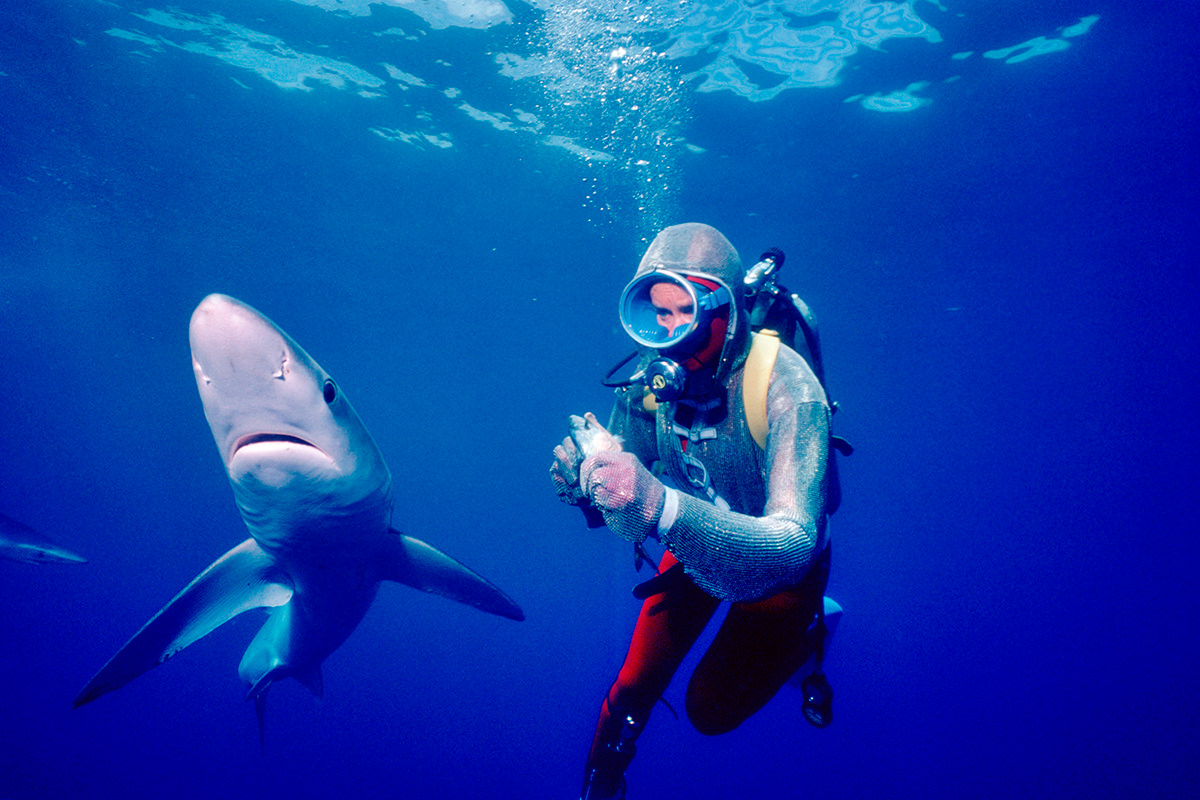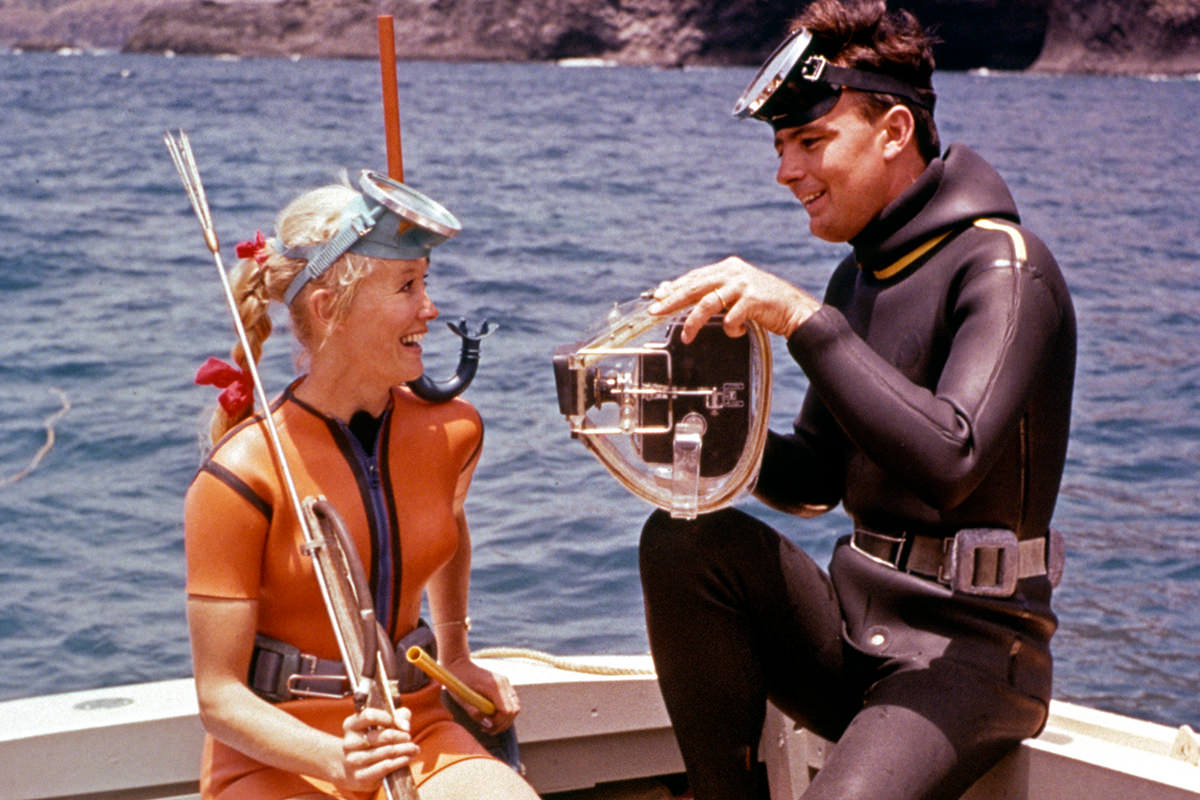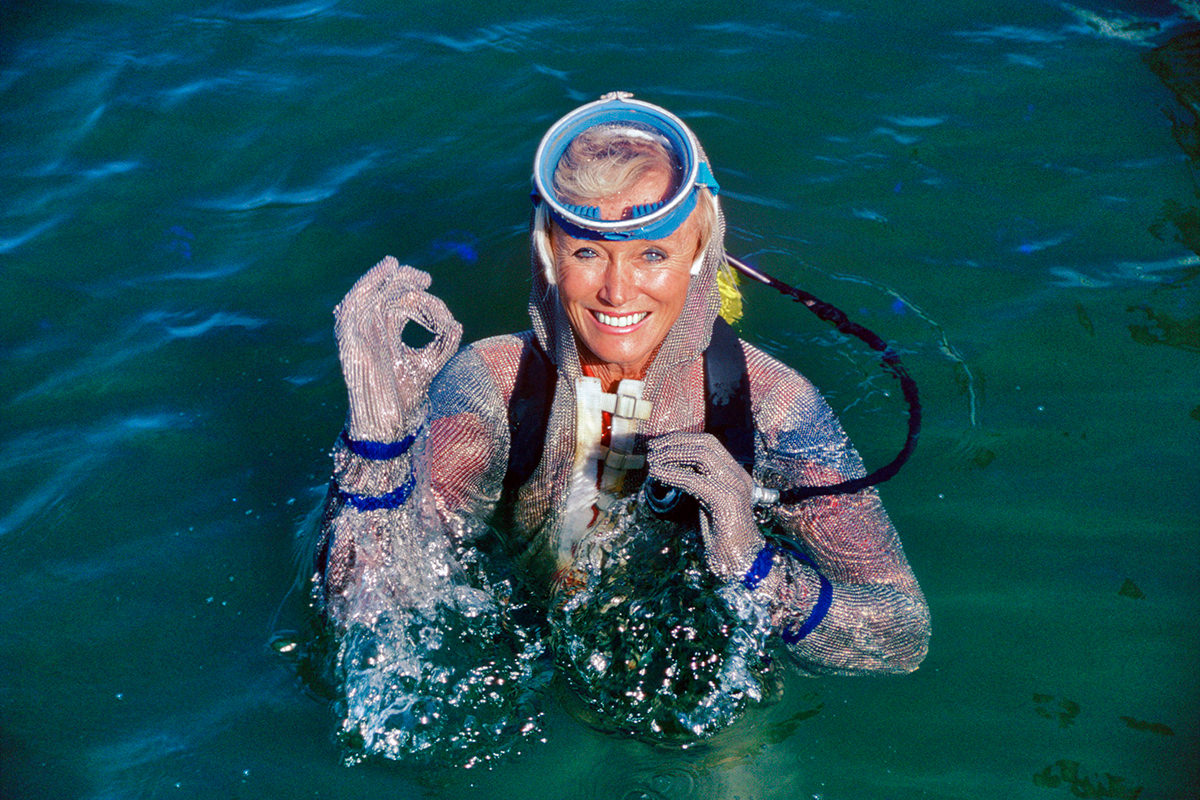Playing with Sharks: capturing the enduring legacy of Valerie Taylor
How director Sally Aitken and producer Bettina Dalton cut between past and present to shine a spotlight on an extraordinary woman’s life.
 Valerie Taylor (Photo credit: Ron and Valerie Taylor)
Valerie Taylor (Photo credit: Ron and Valerie Taylor)
Writer and director Sally Aitken encountered a great white-sized challenge when she started work on the feature documentary Valerie Taylor: Playing with Sharks.
At her fingertips were 5,000 hours of stock footage from Ron and Valerie Taylor’s archive, access to 50 years’ worth of her A4 handwritten diaries, first-hand accounts from diving associates and friends… and then there was Valerie Taylor herself – a straight-talking 85-year-old conservationist who survived polio as a child, contributed to Jaws, hand-fed great whites, and has had a 35 year friendship with a moray eel.
Now how to fit this into 95 minutes.
“The content wrangle, it really was huge,” Aitken says over a Zoom call from Auckland. “And then you have to hold all of that in your head and go, 'right, what's the story?’”
(Spoiler: the eel didn’t make the final cut).
“It's overwhelming when you start to think about a narrative, [but at] the core is this extraordinary woman, with the most feared, misunderstood, cinematic species in the animal kingdom, which is the myriad numbers of shark species. That sort of juxtaposition, that odd coupling was always fascinating to me.”
Aitken submerged herself in research, coming up for air to write a 15-20 page treatment, which was used when financing was being pieced together by producer Bettina Dalton of WildBear Entertainment. Dalton and executive producer Alan Erson pitched successfully to Madman at the Australian International Documentary Conference (AIDC) in 2018, then to UK sales company Dogwoof in 2019 at Sundance Film Festival (where it would have its world premiere in 2021) and have since struck a deal with National Geographic, for the film to stream to millions of viewers on Disney+ from 23 July following its limited national cinema release.
For Dalton, there were personal stakes to getting the story right. She credits seeing Valerie on the cover of National Geographic as setting her on a path to becoming a natural history film maker, and when she directed the 2000 National Geographic documentary Shadow of the Shark, about Ron and Valerie, it also started up a friendship that’s been going strong for 20+ years.
 Valerie and Ron Taylor (Photo credit: Ron and Valerie Taylor)
Valerie and Ron Taylor (Photo credit: Ron and Valerie Taylor)
“There was a moment when I thought, ‘is this going to cost me my friendship with Valerie?',” Dalton says of making Playing with Sharks. “[But] she's still a friend, which is a massive relief.”
For Aitken, the story clicked into place during the first bit of filming, which involved an emotional dive with Valerie and some bull sharks in Fiji in August 2019.
“And I remember seeing on the dive boat on the way back from our filming trip, there's an [shot] of Valerie, which is actually in the film. She's sitting on the boat, looking out to sea, and she's got the most beautiful expression on her face,” Aitken says.
It was a moment she immediately recognised – just not from that day.
“Prior to the trip, I'd seen this archive of Valerie in Fiji from about 1962. That night I pulled up the rushes from the day and this archive shot of her in exactly the same position, albeit in a span of 50-odd years.”
Aitken put the two mirror images side-by-side on her laptop. 1962 and 2019.
“And I was like, ‘that's the film’,” she says. “There's something in this idea of a life that's been captured on film, that's still being lived with amazing purpose. And having that ability to intercut the past and the present is something that film allows you to do. You don't get to do that in real life.”
The other reason they could achieve intercutting between the past and present was because of the resolution and quality of the archival footage, which Dalton says makes up more than 50% of the film.
WildBear Entertainment, which Dalton is an executive producer and principal at, owns stock footage library Content Mint and have been managing Ron and Valerie Taylor’s stock footage for about 15 years.
“We went back to all that film and rescanned it to 2K and 4K where we could, using an in-house Blackmagic cintel scanner,” she says. “To be able to take the film and clean it, and rescan it in all its glory… some of the footage, like where Valerie’s leaning over and stroking that white shark off the back of the duck board, that's 35mm and you can almost see every water droplet on the nose of the shark. It's just so beautiful.”
Meanwhile Aitken’s approach to grappling with the archive to achieve that past-present intercutting was almost “forensic”.
“I wrote an enormous timeline and part of that was actually to cross-reference the archive… trying to log dates against expeditions, and life events against particular film reels and so on.”
 Valerie Taylor (Photo creditl: Ron and Valerie Taylor)
Valerie Taylor (Photo creditl: Ron and Valerie Taylor)
Once the Fiji shoot was in the can, interviews with North American interviewees followed.
“And thankfully we did it in that order,” Aitken says, “because by the time we got around to the edit, we were actually just on the cusp of Covid.”
Aitken and editor Adrian Rostirolla suddenly found themselves sitting in their respective kitchens and having to edit remotely.
“[But] WildBear were amazing because that amount of footage, along with all the other archive that the company represents and the other projects on the company slate, everything suddenly had to go online… and very rapidly the systems were put into place so that we were able to,” Aitken says, also crediting the work of composer Caitlin Yeo and colourist Angela Cerasi in the post-production process. “And what a joy to be making archival rich films in a time of shutdown.”
It’s an archive that Dalton has also made sure will be available for years to come. WildBear have given Valerie a digital copy of everything she and Ron made together before his passing in 2012.
“And we've organised for their entire collection to be lodged with the National Film and Sound Archive (NFSA), so that going forward Australians can look at this footage and know what our oceans were like back then.”
She thinks the late Ron Taylor, who was given a cinematography credit on Playing with Sharks, would approve.
“The fact that their pioneering has gone on to something, that a film about Valerie's life has been honoured universally in the latter stage of her life, that her film is now going to be lodged with the National Film and Sound Archive, that her scientific achievements have all been acknowledged… Ron would be just looking down, thinking, ‘this is awesome’.”
Dalton says making Playing with Sharks – and seeing the response from audiences hearing Valerie’s story – has been about more than making a great documentary. It’s been about spotlighting and preserving an extraordinary woman’s story.
“When you think of that film, Hidden Figures, if those women hadn't been honoured, we wouldn't know their names. It could have easily been the same with Valerie. But there’s a sense of satisfaction that we have put her on the map – or the underwater map – and that she will forever be remembered.”
Valerie Taylor: Playing With Sharks is a National Geographic documentary film and available to stream exclusively on Disney+ from 23 July.

What to read next
Hear direct from the cinematographers of Australian film, television, documentary and web series as they break down what they filmed with and why.
17 Feb 2021
Caris Bizzaca